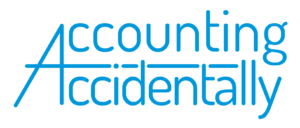The Core Tenets of Staying Safe While Shopping Online: 8 Key Factors for Protecting Yourself
The benefits of online shopping are hard to ignore, and over the last twenty years, the way the internet has changed how we buy things represents one of the biggest shifts in human behaviour.
It’s become even more popular since the pandemic. As the high street continues to dwindle and struggles to keep up with companies like Amazon, people are now staying at home and doing nearly all of their shopping from the comfort of their sofas.
Subscribe to Accounting Accidentally on Substack. Get links to new content on accounting, personal finance, and humor/ short story topics.
While this offers an unprecedented level of convenience, it’s not all it’s cracked up to be. Buying your stuff online greatly increases the risk of getting scammed, and most people don’t take any measures to protect themselves.
In this article, you’ll learn about 8 key factors for keeping safe while enjoying the benefits shopping online has to offer.
Contents
Using Strong Passwords
One of the easiest ways your online accounts can be compromised is by having an insecure password. This is especially the case if you use the same password for all or most of your accounts, because that means that once a hacker has gained access to one, they also have access to others.
The best thing to do is to use a password manager. There are several desktop and mobile apps available, and most browsers and operating systems have them built in. They help you generate strong combinations that have the lowest chance of being guessed or cracked.
Don’t Shop Using Public Wi-Fi
Engaging in online shopping using a public Wi-Fi connection is a big no-no; these connections are far less secure than your home Wi-Fi and represent an ideal opportunity for hackers to sit on the network and wait for someone to make a mistake.
You can use a virtual private network (VPN) to make the process more secure, but it’s still best to limit your online shopping to when you’re at home.
Avoid Dodgy-Looking Sites
In most cases, if it seems too good to be true, then it probably is. Be on the lookout for suspiciously good deals, and always verify that the website you’re visiting is the official one for that brand. One of the most common ways scammers lure people in is by pretending to be a legitimate site, but thankfully, there are things you can do to prevent being fooled.
The most important thing is to inspect the URL: if the website begins with ‘https’, you should be safe in the assumption that it’s safe (the ‘s’ stands for secure).
Use Two-Factor Authentication
Two-Factor Authentication (otherwise known as 2FA) is, thankfully, becoming more and more popular. It essentially adds an extra layer of protection when you log in to a site, sending you a text message to your phone or email to verify that it’s really you.
Naturally, this prevents hackers from gaining access, as they don’t have access to your phone or email to verify themselves. It’s not entirely foolproof (such as in large-scale hacks where your email is also compromised), but it’s a simple, highly effective way to greatly increase your safety profile.
Keep Your Devices Up-to-Date
One of the most important aspects of protecting yourself is to keep your devices up-to-date. Beyond offering new features, the main purpose of a software update is to enhance security features by strengthening code and removing bugs: if you remain on an older version, it’s much easier for hackers to exploit unpatched holes in the software and gain access.
When it comes to smartphones, it’s key to ensure both the operating system and any apps you use are updated as soon as possible (it’s a good idea to turn on automatic updates so that you don’t forget). On desktop devices, you should be automatically prompted with notifications to update, as is the case with browsers like Safari, Chrome, and Firefox, as well as the Windows, Mac, and Linux operating systems themselves (though it’s important to be aware that after a certain point, pieces of software become unsupported and no longer receive security updates).
Keep an Eye on Your Bank Statements
Many times, scams and hacks go unnoticed because not everyone checks their bank statements. There are many ways for a fraudster to make themselves invisible, and often, the only way you’d know you’d had money stolen from your account is if you actually checked.
Thankfully, checking your statement is as simple as periodically taking a quick scroll through your online banking app.
Check Seller Reputation
If you’re buying second-hand from sites like eBay, it’s essential to check out the seller’s reputation before committing to a purchase.
If the seller has a track record of not delivering goods, taking too long to process orders, or outright scamming their customers, this will be displayed, usually as a star rating, on their profile.
Know Where to Go for Help
Of course, even if you employ all of the strategies discussed above, it’s still possible to get scammed. In the rare event that this does happen, you need to know which professionals to turn to.
For example, instances of online scamming can result in cases of identity theft in extreme cases, as hackers are able to gain access to your bank accounts, name, address, and other forms of identification. In these instances, you should contact the police. If you have payments showing up on your account that you haven’t made, you may also want to approach a lawyer to dispute the credit report.
In all cases, you’ll need to contact your bank to put a hold on your account and possibly have your details changed.
Wrapping Up
Hopefully, you now have a much better idea of what it means to stay safe while online shopping. While there are many different ways a scammer can gain access to your details (and increasingly complex methods being discovered all the time), so long as you stay consistent in your efforts to protect your accounts, a data breach or fraudulent attack will remain unlikely.
Ken Boyd
Author: Cost Accounting for Dummies, Accounting All-In-One for Dummies, The CPA Exam for Dummies and 1,001 Accounting Questions for Dummies
(amazon author page) amazon.com/author/kenboyd

